Bouqras
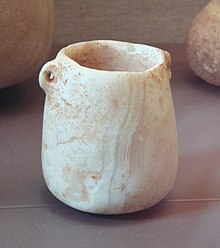 | |
| Location | 35 km (22 mi) southeast ofDeir ez-Zor,Syria |
|---|---|
| Region | Euphrates |
| Coordinates | 35°05′07″N40°23′51″E/ 35.085274°N 40.397445°E |
| Type | Tell |
| Part of | Village |
| Length | 250 metres (820 ft) |
| Width | 100 metres (330 ft) |
| Area | 5 hectares (540,000 sq ft) |
| History | |
| Material | bones, flints, pottery, plaster |
| Founded | c. 7400 |
| Abandoned | c. 6200 BC |
| Periods | PPNA,PPNB,Neolithic |
| Site notes | |
| Excavation dates | 1960-1965 1976-1978 |
| Archaeologists | Henri de Contenson Willem J. van Liere Peter Akkermans Maurits van Loon J. J. Roodenberg H. T. Waterbolk |
| Condition | Ruins |
| Management | Directorate-General of Antiquities and Museums |
| Public access | Yes |
Bouqrasis a large, oval shaped,prehistoric,NeolithicTell,about 5 hectares (540,000 sq ft) in size, located around 35 kilometres (22 mi) fromDeir ez-ZorinSyria.[1]
Excavation
[edit]The tell was discovered in 1960 byDutchgeomorphologist,Willem van Liere.It was excavated between 1960 and 1965 byHenri de Contensonand van Liere and later between 1976 and 1978 by Peter Akkermans, Maurits van Loon, J. J. Roodenberg andH. T. Waterbolk.[1]
Construction
[edit]The mound was found to be approximately 4.5 metres (15 ft) deep and showed evidence of 11 periods of occupation spread over at least 1000 years between ca. 7400 and 6200 BC. The earliest levels, 11 to 8, showed earlyNeolithicaceramic occupation developing on to stages withpotteryin levels 7 to 1, from which over 7000sherdswere recovered. Material from later levels was visible on the surface when first discovered.[1]The layout and arrangement of houses seems to have been well ordered with similar arrangements of rooms, entrances, hearths and other features. Houses were made of mudbricksand generally rectangular with three or four rooms.[2]
Culture
[edit]Bouqras seems to have developed in comparative isolation with few other settlements near the area. Interiors of the buildings featured white plastered walls with occasional use of redochrefor decoration with some images of birds. By later stages of the settlement, it was likely inhabited by as many as 700 to 1000 villagers.[1]Large quantities ofobsidianwas found suggesting links withAnatolia.[2]A distinctive group of limestone, alabaster and gypsum vessels was also found made from local materials.[3]Rounded or cylindricalbeadswere also found made of bone,shell,greenstones,carneliananddentalium.An alabaster bracelet fragment and pendant were recovered as forms of personal decoration.[3]Several stone stamp seals including one of alabaster and one ofjadeitewere found with incised rectilinear patterns along with a few clay figurines. Pottery started to be found from the third level of habitation including a white plaster vessel. Other materials were varied with coarse and fine sherds made with mixed straw and sand. Some sherds were burnished or painted red, one with a triangle on it.[3]Arrowheads recovered includedByblos pointsand two types ofAmuq pointsalong with two other distinctive designs.[4]Flints were usually of a fine dark grey or brown type found locally.[3]
-
Stone Bowl, Syria, probably Bouqras, ca. late 8th millennium BC.
-
Calcitetripod vase, mid-Euphrates, probably from Tell Buqras, 6000 BC, Louvre Museum AO 31551
-
Alabaster pot with handles, Buqras region, 6500 BCE Louvre Museum AO 28519
-
Alabaster pot Mid-Euphrates region, 6500 BC, Louvre Museum
-
Alabaster pot, Mid-Euphrates region, 6500 BC, Louvre Museum
-
Footed bowl ingranite,Syria, end of 8th millennium BC.
-
Jar in calcite alabaster, Syria, late 8th millennium BC.
-
Wall painting in a Neolithic house in Tell Bouqras.Deir ez-Zor Museum(copy).[5]
Agriculture and animal domestication
[edit]Paleobotanicalstudies were carried out byWillem van Zeiston carbonized plant remains recovered via water flotation. This has shown rain fed agriculture was practiced at Bouqras including cultivation ofEmmer,Einkornand free-threshing wheat, naked and hulledbarley,peasandlentils.[6][7]Sickleblades, querns and pounders appear in the early stages at Bouqras, but not in later stages.White Warewas found suggested to have been used asbasketcovering to make them impermeable.[2]
Sheepandgoatcomprised approximately 80% of the 5800 identifiable fragments of animal remains found. Other fauna includedpigsandcattle,the domestication of which is uncertain.Deer,gazelleandonagerwere also hunted.[8]
References
[edit]- ^abcdLua error in Module:Citation/CS1/Configuration at line 2083: attempt to index a boolean value.
- ^abcLua error in Module:Citation/CS1/Configuration at line 2083: attempt to index a boolean value.
- ^abcdLua error in Module:Citation/CS1/Configuration at line 2083: attempt to index a boolean value.
- ^Lua error in Module:Citation/CS1/Configuration at line 2083: attempt to index a boolean value.
- ^Lua error in Module:Citation/CS1/Configuration at line 2083: attempt to index a boolean value.
- ^Van Zeist W., Waterbolk-Van-Rooijen W., Paleorient, Volume 11/2, The Palaeobotany of Tell Bouqras, Eastern Syria, 1985.
- ^Lua error in Module:Citation/CS1/Configuration at line 2083: attempt to index a boolean value.
- ^Lua error in Module:Citation/CS1/Configuration at line 2083: attempt to index a boolean value.
Further reading
[edit]- de Contenson, H., van Liere, W.J., A Note on Five Early Neolithic Sites in Inland Syria 13, 175–209, 1963.
- de Contenson, Henri, & van Liere, Willem, Premier sondage à Bouqras en 1965. Rapport préliminaire, Annales Archéologiques Arabes Syriennes XVI 2, 1966, p. 181-192.
- de Contenson, H., Découvertes récentes dans la domaine du Néolithique en Syrie, L'Anthropologie, 70, 388–391, 1966.
- Vogel, J.C., Waterbolk, H.T., Groningen Radiocarbon Dates VII, Radiocarbon, 9, 107–155, 1967.
- Clason, A.T., The Animal Remains from Tell Es Sinn Compared with those from Bouqras, Anatolica, 7, 35–53, 1980.
- Akkermans, P.A., Fokkens, H., Waterbolk, H.T., Stratigraphy, architecture and layout of Bouqras in Cauvin, J. and Sanlaville (eds.) 1981, Préhistore du Levant: Chronologie et organisation de l´éspace depuis les origines jusqu´au VIe millenaire, Colloque International du CNRS, Lyon 1980, Paris, 485–502, 1981.
- Akkermans, P.A., Boerma, J.A.K., Clason, A.T., Hill, S.G., Lohof, E., Meiklejohn, C., Le Mière, M., Molgat, G.M.F., Roodenberg, J., Waterbolk-van Rooijen, W., van Zeist, W., Bouqras Revisited: Preliminary Report on a Project in Eastern Syria. Proceedings of the Prehistoric Society, 49, 335–372, 1983.
- de Contenson, Henri, La campagne de 1965 à Bouqras, Cahiers de l'Euphrate, 4, 335–371, 1985.
- Roodenberg, J., Le mobilier en pierre de Bouqras. Utilisation de la pierre dans un site néolithique sur le Mayen Euphrate (Syrie) Leiden/Istanbul: Nederlands Historisch-Archaeologisch Instituut, 1986.
- Lohof, E., A lesser known figurine from the near eastern Neolithic, Haex et al. (eds.) 1989 in To the Euphrates and Beyond: Archaeological Studies in Honour of Maurits N. van Loon, Balkema, Rotterdam, 65–74, 1989.
- Clason, A.T., The Bouqras Bird Frieze, Anatolica, 16, 209–213, 1990.
- Boerma, J.A.K., Palaeo Environment and Palaeo Land-Evaluation Based on Actual Environment Conditions of Tell Bouqras, East Syria, Anatolica, 16, 215–249, 1990.
- Bernbeck, R., Die Auflösung der häuslichen Produktionsweise, Berliner Beiträge zum Vorderen Orient 14 (Ph.D. dissertation Berlin, Freie Univ. 1991), Berlin, 1994.


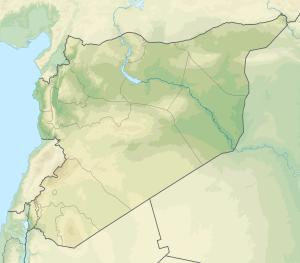

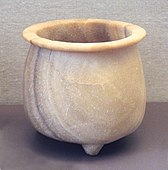


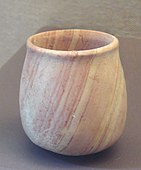

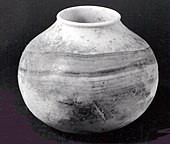
![Wall painting in a Neolithic house in Tell Bouqras. Deir ez-Zor Museum (copy).[5]](https://upload.wikimedia.org/wikipedia/commons/thumb/6/60/Neolithic_wall_painting_in_Tell_Bouqras%2C_Deir_ez-Zor_Museum.jpg/170px-Neolithic_wall_painting_in_Tell_Bouqras%2C_Deir_ez-Zor_Museum.jpg)